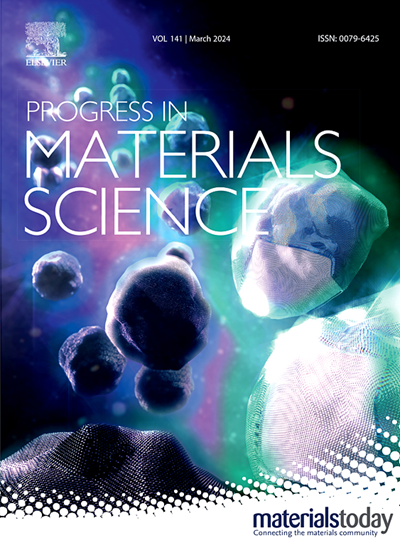深度学习在金属增材制造中的应用综述:对工艺、结构和性能的影响
IF 40
1区 材料科学
Q1 MATERIALS SCIENCE, MULTIDISCIPLINARY
引用次数: 0
摘要
深度学习(DL)越来越多地用于预测和控制微结构的形成、优化性能和减少增材制造金属部件的缺陷。本文综述了深度学习在增材制造(AM)中的具体应用,如零件设计和结构、原位过程传感和监测、微观结构和性能控制、缺陷检测以及残余应力和变形的缓解。该综述强调了计算资源、数据需求的重要性,以及物理信息深度学习在推进这些应用中的作用。此外,还讨论了算法选择和数据集适用性的最佳实践,以及阻碍进展的当前研究差距,包括理解增材制造过程和提高计算效率方面的挑战。最后,展望了未来的研究方向,强调了实时实现和模型可解释性的重要性。这项工作旨在为希望在不断发展的增材制造领域利用深度学习的研究人员和实践者提供一个基础框架。本文章由计算机程序翻译,如有差异,请以英文原文为准。
A review of deep learning in metal additive manufacturing: Impact on process, structure, and properties
Deep learning (DL) is increasingly used to predict and control the formation of microstructures, optimize properties, and reduce defects in additively manufactured metallic components. This review examines the specific applications of deep learning in additive manufacturing (AM), such as part design and architecture, in-situ process sensing and monitoring, microstructure and property control, defect detection, and the mitigation of residual stress and distortion. The review emphasizes the significance of computational resources, data requirements, and the role of physics-informed deep learning in advancing these applications. Additionally, best practices for algorithm selection and dataset suitability are addressed, along with current research gaps that hinder progress, including challenges in understanding AM processes and enhancing computational efficiency. Finally, the outlook presents future directions for research, underscoring the importance of real-time implementation and model interpretability. This work aims to provide a foundational framework for researchers and practitioners looking to leverage deep learning in the evolving field of additive manufacturing.
求助全文
通过发布文献求助,成功后即可免费获取论文全文。
去求助
来源期刊

Progress in Materials Science
工程技术-材料科学:综合
CiteScore
59.60
自引率
0.80%
发文量
101
审稿时长
11.4 months
期刊介绍:
Progress in Materials Science is a journal that publishes authoritative and critical reviews of recent advances in the science of materials. The focus of the journal is on the fundamental aspects of materials science, particularly those concerning microstructure and nanostructure and their relationship to properties. Emphasis is also placed on the thermodynamics, kinetics, mechanisms, and modeling of processes within materials, as well as the understanding of material properties in engineering and other applications.
The journal welcomes reviews from authors who are active leaders in the field of materials science and have a strong scientific track record. Materials of interest include metallic, ceramic, polymeric, biological, medical, and composite materials in all forms.
Manuscripts submitted to Progress in Materials Science are generally longer than those found in other research journals. While the focus is on invited reviews, interested authors may submit a proposal for consideration. Non-invited manuscripts are required to be preceded by the submission of a proposal. Authors publishing in Progress in Materials Science have the option to publish their research via subscription or open access. Open access publication requires the author or research funder to meet a publication fee (APC).
Abstracting and indexing services for Progress in Materials Science include Current Contents, Science Citation Index Expanded, Materials Science Citation Index, Chemical Abstracts, Engineering Index, INSPEC, and Scopus.
 求助内容:
求助内容: 应助结果提醒方式:
应助结果提醒方式:


